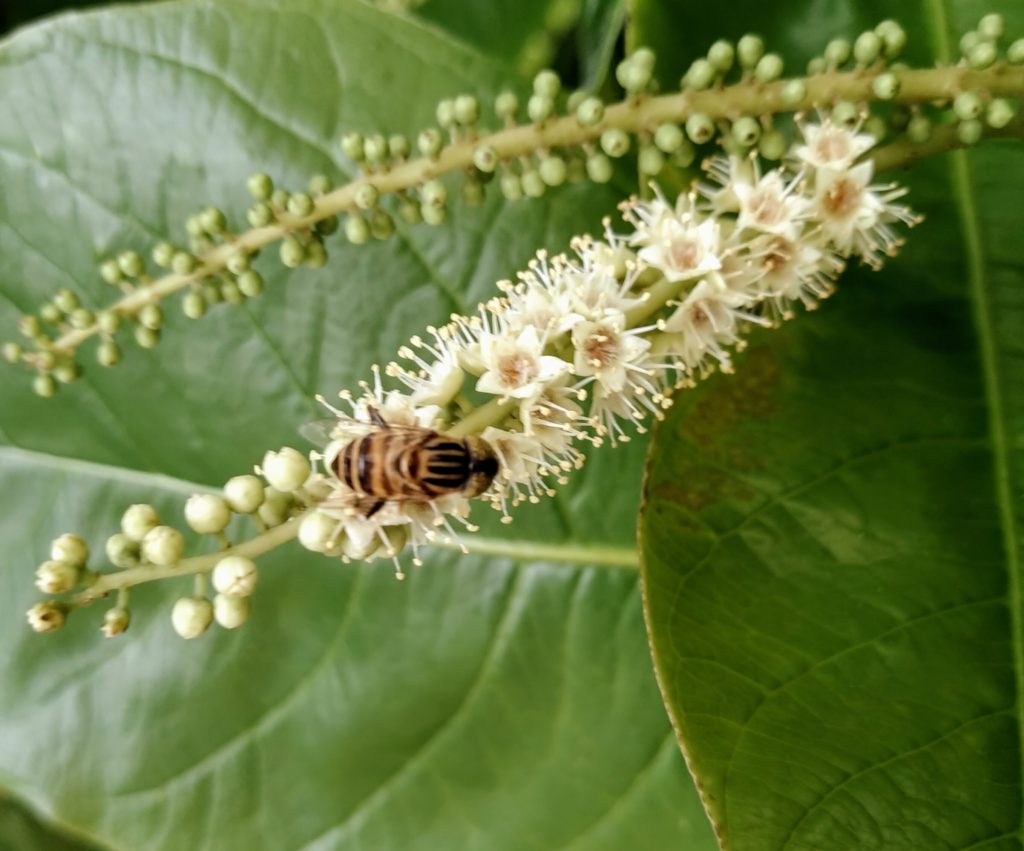My most interesting finding at our apartment community, Rustomjee Urbania has been the pollination of Indian almond trees on the podium. On my morning walks this monsoon, I began noticing insects on the small, white flowers of the Indian almond trees. Looking closely at them, I found there were houseflies, blue bottle flies, and a larger-yellow insect.
I took pictures and made videos of the pollinators and could identify the large yellow insect as a Hoverfly or Eristalinus megacephalus. The hoverfly has another name, drone fly, as it resembles honey bee drones that have stings in them. Predators avoid hoverflies for fear of bee stings as hoverflies look like drones.

The species name “megacephalus” of Hoverflies stands for their large head, which bears large golden compound eyes with purplish spots. The insect has horizontal stripes on its abdomen and vertical stripes on its black thorax (insect part between head and abdomen), transparent, flexible wings, and black-tipped legs.
Hoverflies are good pollinators which help trees like Indian almond in tandem with other insect pollinators like blue bottle flies and house flies. Humans have a very biased and self-centric view of insects and attribute importance to insects based on our needs. For example, we consider honey bees a good insect for honey, beeswax, and crop pollination.
However, honey bees do not pollinate all plants, and many other insects help pollinate wild plants. As we see on Indian almond trees, different insects visit them to help those bear fruit.
The maggots or larvae of all three Indian almond pollinators, hoverflies, blue bottle flies, and house flies develop in organic matter, including garbage. The maggots usefully consume decaying material and prevent its build-up. People may consider flies a nuisance and disease-spreaders, but fly maggots decompose organic matter, and adults pollinate flowers.
Trees in common urban landscapes have so much happening and can help us spend hours learning about plants and insects. This monsoon, I have been watching Indian almond trees bear fragrant, bowl-like white flowers, and attract insects to their sweet nectar. After insects pollinate the flowers, Indian almond trees develop purple fruit, which attracts squirrels and birds. You can find the remains of squirrel and bird eaten fruits eaten by on the ground below the trees.
